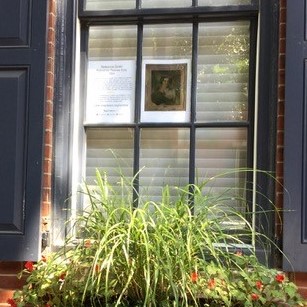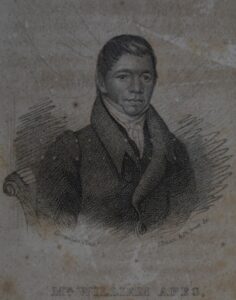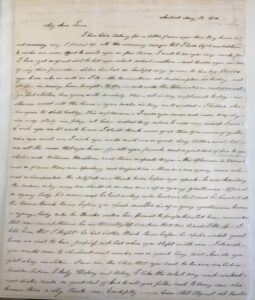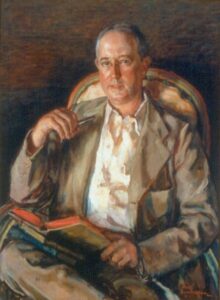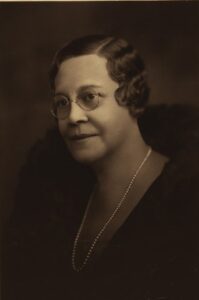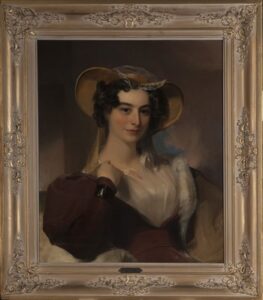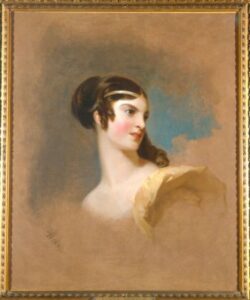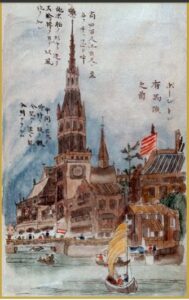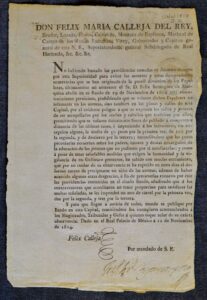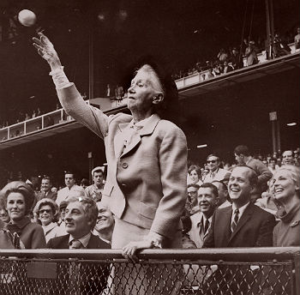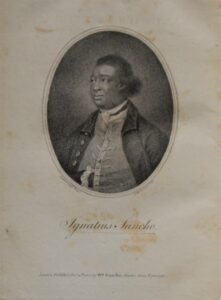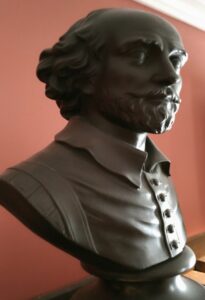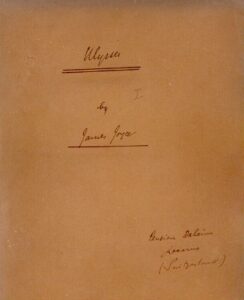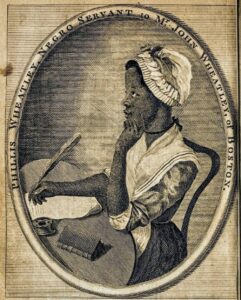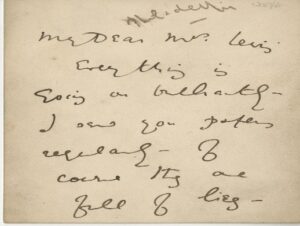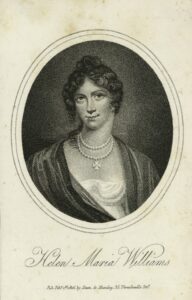While The Rosenbach remains closed, our neighbors in Rittenhouse and Fitler Square are showcasing our collections in their windows. Throughout the neighborhood you’ll find images and information highlighting different objects from our collections. You can find additional information about each object below.
Interested in participating? If you have a first-floor window that faces the street, we’d love your help! Email Emilie Parker, our Director of Education, at [email protected].
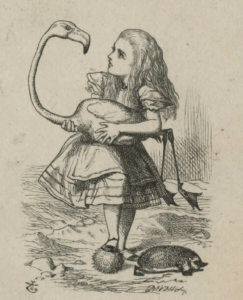 |
Illustration from Alice’s Adventures in Wonderland (1865)This print was created by John Tenniel for the first edition of Lewis Carroll’s Alice’s Adventures in Wonderland published in 1865. The Rosenbach has a number of prints and illustrations by Tenniel in its collection along with first editions of Lewis Carroll’s works and letters to his friends, family and colleagues. For more information on The Rosenbach’s Lewis Carroll holdings, click here.
|
|
|
William Apess (1798-1839)William Apess was a political and religious leader from Massachusetts and a member of the Pequot tribe. The Rosenbach has a copy of his autobiography which is titled A Son of the Forest, The Experience of William Apes, a Native of the Forest, Written by Himself. Click here to watch a program about William Apess and other Indigenous Author Activists in the Rosenbach’s collection. For more information about books and documents related to Native American history and culture at The Rosenbach, please visit our Native American Collections Guide. |
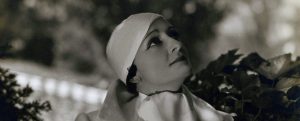 |
Photograph of Mercedes D’AcostaMercedes D’Acosta (1893-1968) was an American playwright. However, she is remembered best for her personal rather than professional life. De Acosta was involved in numerous relationships with screen sirens such as Eva le Gallienne, Marlene Dietrich and Greta Garbo. The Rosenbach has D’Acosta’s papers in its collection. Click here to watch a virtual Behind the Bookcase program featuring Mercedes D’Acosta’s letters at the Rosenbach. |
|
|
Letter from Emily Dickinson to Jane Humphrey (1842)Emily Dickinson (1830-1886) wrote this letter to her friend Jane Humphrey in 1842 when she was 11 years old. Jane had lived with the Dickinsons while she briefly attended Amherst Academy with Emily. After Jane moved away, they continued to write to each other for many years. The Rosenbach has an interesting collection of letters written by Emily to her friends and family as well as first editions of her poetry. Click here to watch a virtual Behind the Bookcase program featuring Emily Dickinson’s letters from the Rosenbach. https://www.youtube.com/watch?v=oylzvlPGRNo&feature=emb_logo |
|
|
A.S.W. Rosenbach (1876-1952)A.S.W. Rosenbach was one of the founders of The Rosenbach, located at 2008-2010 Delancey Place in Philadelphia. His personal collection, now the core of the Rosenbach, features treasures such as the only surviving copy of Benjamin Franklin’s first Poor Richard Almanac and the manuscript of James Joyce’s Ulysses. The Rosenbach’s collection is continuously growing, including the addition of the papers of poet Marianne Moore, and Bram Stoker’s notes for Dracula. |
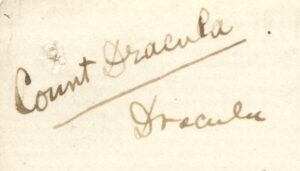 |
A Page from the Outline of Dracula by Bram StokerBram Stoker (1847-1912) wrote his novel Dracula over the course of seven years. The Rosenbach is the home of Bram Stoker’s Notes for Dracula, over 100 pages of outlines, early plot ideas, and research notes, compiled by the author. Every Sunday for 27 weeks, The Rosenbach will be having a live virtual conversation about Bram Stoker’s novel Dracula and highlight one chapter per week. The novel begins on May 3 and ends 27 weeks later on November 6. Join us for one program or all 27! Joining Edward G. Pettit of The Rosenbach will be a revolving set of co-hosts, all of whom have had a long history of reading, collecting, and creating with Stoker’s vampire. The Rosenbach is the home of Bram Stoker’s Notes for Dracula, over 100 pages of outlines, early plot ideas, and research notes, compiled by the author over the seven years he developed and wrote the book. Register for the program here and find the full series of videos here. |
|
|
Alice Dunbar-NelsonAlice Dunbar-Nelson (1875–1935), who lived for a time in Philadelphia, dedicated her life to teaching, writing, and civic activism. Her work encompassed literature, behavioral health, and African American history and culture, as well as public school and reformatory education. The Rosenbach is presenting an exhibition of her work and related programs in the Fall of 2020. Click here to watch a video of a program presented by the Co-curators of “I Am an American!” The Authorship and Activism of Alice Dunbar-Nelson Monet Timmons and Jesse Erickson. |
|
|
Rebecca Gratz, Portrait by Thomas Sully (1831)This portrait of Rebecca Gratz (1781-1869) was painted by Thomas Sully in 1831. Rebecca Gratz was a prominent Philadelphia philanthropist; among the many organizations she helped found were the Hebrew Sunday School, and the Female Hebrew Benevolent Society. One of the students she taught in the Sunday School was the Rosenbach brothers’ mother, Isabella Polock Rosenbach. |
|
|
Fanny Kemble, Portrait by Thomas Sully (1833)Fanny Kemble was an English actress and Abolitionist. |
|
|
Illustration from Manjiro Nakahama’s JournalNakahama Manjiro’s (1827-1898) epic tale begins in 1841, when, as a teenager, he left his Japanese village on a fishing trip. A violent storm left him shipwrecked and set the course that would lead Manjiro to become the first Japanese person to live in the United States. The Rosenbach has Manjiro’s own illustrated manuscript in its collection. Click here for an online exhibition about the manuscript.
|
|
|
Calleja del Rey, Don Felix Maria, Viceroy. Prohibition of flying kites in public (1814)This is a government document from 1814 banning kite flying in Mexico City, a city of 170,000 people. Because it was so crowded, it became dangerous to fly kites in public squares. By comparison, Philadelphia had a population of only 53,722 in 1813, far less than half the number of people living in Mexico City. For more information about the Rosenbach’s collection of Mexican government documents, please visit our Mexican Broadsides Collections Guide.
|
|
|
Marianne Moore (1887-1972)Marianne Moore (1887-1972) the Modernist poet, wrote poems, essays, letters, and edited the literary journal The Dial. She influenced Ezra Pound, T.S. Eliot, Wallace Stevens, and Sylvia Plath. The Rosenbach’s collections include virtually all of Moore’s manuscripts and papers, as well as her personal library, thousands of photographs, and the contents of her Greenwich Village living room. Highlights of the Rosenbach’s Marianne Moore collection are available here. A more in-depth description of the Rosenbach’s Moore holdings can be found here.
|
|
|
Charles Ignatius SanchoBorn onboard a slave ship making its way from Africa to the Americas, Charles Ignatius Sancho (1729 – 1780) lived a remarkable life. Following the death of his parents, Sancho was relocated to England, received an informal education, and became active in abolitionist circles. The Rosenbach recently acquired a collection of his letters.
|
|
|
Portrait Bust of William Shakespeare (1776)This bust of Shakespeare was made by the English decorative arts company Wedgwood. A.S.W. Rosenbach, one of the founders of the museum, was a huge Shakespeare fan. The Rosenbach has a large Shakespeare collection, including almost 150 of his published plays from the 17th, 18th and 19th centuries.
|
|
|
Manuscript of James Joyce’s UlyssesJames Joyce (1882-1941) has been called the greatest 20th-century novelist writing in English. Ulysses is his masterpiece. Dr. A.S.W Rosenbach, one of the founders of the Rosenbach, purchased the manuscript of Ulysses in 1924. Click here for to watch Elizabeth Fuller, the Rosenbach’s Librarian, talk about the history of the Ulysses manuscript and here for information about the Rosenbach’s Ulysses Everyday Reading Challenge. |
|
|
Phillis Wheatley, Poems on Various Subjects, Religious and Moral (1773)The first published African American poet, Phillis Wheatley was just 19 years old when her book, Poems on Various Subjects, Religious and Moral, was printed in 1773. Phillis was sold into slavery when she was just 7 years old. Literate in English and Latin, Phillis’s poetry continues to challenge narratives of race and humanity. For more information about the Rosenbach’s African and African American collections, please visit our African and African American Collections Guide.
|
|
|
Letter from Oscar Wilde to Elizabeth Lewis (1882)Oscar Wilde visited Philadelphia in 1882. He wrote this letter to a friend at home in Dublin after his arrival in the city. He notes that he will speak that evening in front of 1500 people and will visit with Walt Whitman the following day. He notes, “Everything is going on brilliantly.” For more information about the Rosenbach’s Oscar Wilde collection, please visit our Guide to Oscar Wild and click here for a Wilde in Philadelphia walking tour. |
|
|
Helen Maria WilliamsHelen Maria Williams (1759-1827 ) was a British poet, abolitionist and suffragette. She is featured in the Rosenbach’s online exhibition The Rights of Woman available here. |

